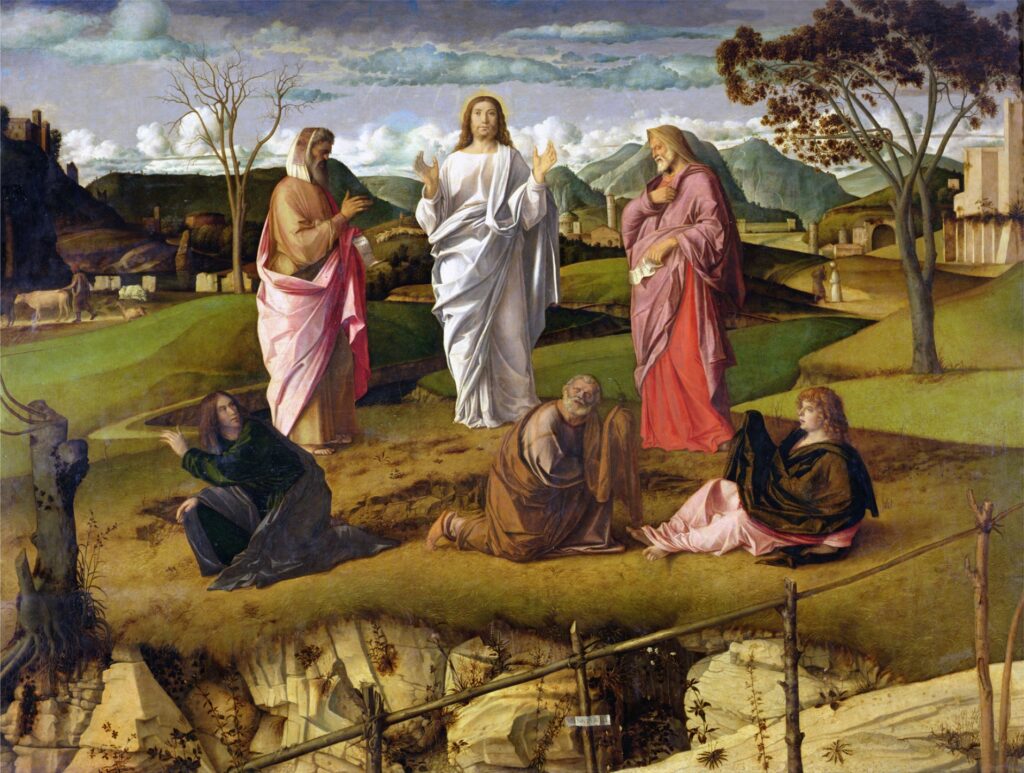
Christ stands before us dressed in garments which are as bright as the band of white clouds on the horizon behind him. The cloth looks like it has been stiffened. But these are hardly the “dazzling robes” of the gospel accounts. They are not luminous, but reflect the same light which falls on Moses and Elijah. Christ’s raised left hand casts a shadow across his chest. This is not the only departure Bellini makes from the gospel text. This is not a mountain top. You can see real mountain peaks in the distance. This is just an area of raised ground. The three Apostles are not looking at Christ. Rather this is the later moment when a cloud overshadows them and they hear a voice saying, “This is my beloved son, listen to him.” (Mk 9:7). They each look in a different direction, as if hearing the voice, they are trying to locate the speaker. They look rather out of sorts. Christ stands behind and above them. His face is serene. He looks rather like a Greek God or hero in a classical contrapposto pose. By contrast, the Apostles are anything but serene or god-like. They are on the ground. Bellini has made them slightly smaller than Christ and his companions and this simple device confuses the eye, making the apostles look further away and Christ nearer. As a result our primary focus is on Christ. By such subtle effects, Bellini suggests that which is beyond representation. As is other works by Bellini, the landscape contains elements which offer poetic meditation on the mystery he depicts. A dead tree on the left is balanced by a living tree on the right. A castle in dark shadow on the left looks across at sunlit city walls on the right. The tree stump on the left may symbolise the passion to come, but around it there are signs of new growth. This painting’s rich symbolism is meant to lead the viewer into deeper mediation on the mystery shown. To the front a path rises up to give access to the raised ground. The fence gives emphasis to the incline and its diagonal contrasts with the vertical and horizontal lines in the scene behind. The fence serves to distance the viewer from the scene and yet there is a subtle invitation in the path. It seems to continue to the right, which may suggest the onward journey to Jerusalem before the Christ and the Apostles, and the path we are all invited to follow.
The Catholic Chaplaincy serves the students and staff of the University of Edinburgh, Edinburgh Napier University and Queen Margaret University.
The Catholic Chaplaincy is also a parish of the Archdiocese of St Andrews and Edinburgh (the Parish of St Albert the Great) and all Catholic students and staff are automatically members of this parish.